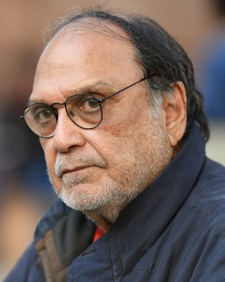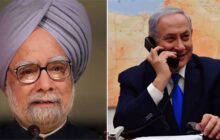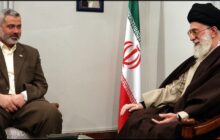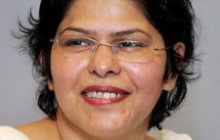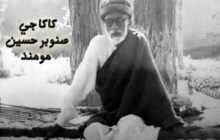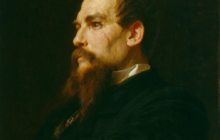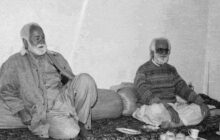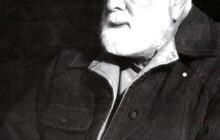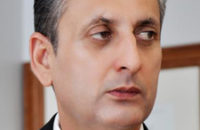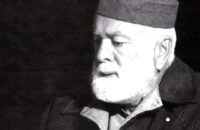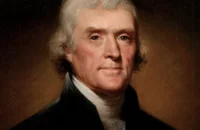Khaled Ahmed
In 2018, an allotted piece of land for a Shri Krishna Mandir in Islamabad was attacked and occupied by clerical protesters saying a Hindu structure could not be built on a city named after Islam.
In June this year, under the government of Imran Khan, the project was restarted with a first funding installment of $1.3 million. But once again the “protesters” reappeared, egged on by the big seminaries in Karachi saying Islam would be insulted by it, and disappointing Lal Chand Mahli, a Hindu parliamentarian and member of the ruling party, the Pakistan Tehreek-e-Insaf (PTI). He thought the Krishna temple would clean up the bad image of an ideological state guilty of maltreatment of its minorities.
Sadly, Pakistan Muslim League (Quaid-e-Azam) – one of the key political allies of the ruling PTI – joined the frog-chorus of the pious and forced another halt to the construction of the first-ever Hindu temple in Islamabad. The Capital Development Authority (CDA) had transferred ownership of the plot to Islamabad Hindu Panchayat; and a small groundbreaking ceremony for the temple construction had taken place end of June, attended by the federal minister for religious affairs and representatives of the Hindu community.
In Pakistan’s first census in 1951, Hindus made up 1.6% of the total population of West Pakistan. Soon the Hindu minority felt discriminated against and began trickling out from Pakistan to India. One such group was recently led by Bhagwan Das who had two growing children with no formal education and said his family was treated like “second-class citizens” in Pakistan: “Our children don’t feel welcome in schools there. Muslims taunt us for being Hindu. Our girls are also sexually harassed”.
Muslims had treated Hindus with great respect in history. Long ago, one of the Central Asian astronomers involved in the project of measuring distance between two meridians Abu Jafar Muhammed ibn Musa al-Khwarizmi (780-850), learned his most important lessons from Hindu mathematicians. Living in Merv near Aral Sea between today’s Uzbekistan and Kazakhstan, Al Khwarizmi was the most influential mathematician on any continent during the early Middle Ages.
Al Khwarizmi got today’s term algorithm named after him after reading Hindu writings. His small booklet penned in 825 called Algoritmi de numero Indorum was picked up from Brahmagupta: the numerical system of nine symbols and a placeholder “sunya”. Amazed by the usefulness of the simple symbols and of positional notation by Brahmagupta, he demonstrated in his pamphlet their superiority to the Greek numbers then used in Baghdad, and to the Beduin numbers the Arabs had brought with them from the desert.
Brahmagupta had actually benefited from another great Hindu mathematician, Aryabhata, credited with writing a work called the Khandak-Adyaka, which means “food prepared with candy,” possibly referring to the pleasure it gives to seekers of knowledge. But the original has been lost. Only a heavily edited and annotated version exists today, reworked by Brahmagupta (598-665).
In the early 4th century, the Gupta dynasty seized most of northern India and launched Hindu India’s classic age. In early fifth centuries it made great strides in mathematics and astronomy, recording them in a series of texts known as “siddhantas”, or “systems” of astronomy. It was then that Aryabhata produced great work: estimates of pi, basic rules of trigonometry, the motion of the planets and stars, and the length of the year.
Modern algebra itself comes from one of al-Khwarizmi’s books, “Kitab al-jabr wa al-muqabalah” (Calculation by Restoration and Reduction).
Later this became a standard textbook of mathematics in European universities until the sixteenth century. The word algorithm—algoritmus in Latin—comes from the Europeans’ use of al-Khwarizmi’s own name to refer to the study of mathematics. But he had got it after reading Brahmagupta: the numerical system of the Indians, the nine symbols and a placeholder “sunya”.
In 1979, Pakistani scientist Abdus Salam was awarded the Nobel Prize in Physics for his contributions to the theory of the “unified weak and electromagnetic interaction between elementary particles, including, inter alia, the prediction of the weak neutral current”.
Growing up in the village of a small town of Jhang in Pakistan’s Punjab province, Salam was introduced to mathematics by another Aryabhata, a Hindu schoolteacher. After getting his Nobel medal he went straight to India, got his friends to find out where his old teacher was, and hung his Nobel medal around his neck.
Pakistan must recall the golden age when Muslims and Hindus benefited from each other. Pakistan must seek normal good-neighbourly relations with India. Religion has got Muslims their Pakistan but mathematics remains the weakest subject taught in their schools and universities.
Lahore’s FCC University recently fired Dr Hoodbhoy from the department of math and physics because of his “rational” objection to the state’s ideology. In foreign policy, Chanakya’s mandala of inter-state relations also recommends good relations with the “first circle” of neighbouring states. Prime Minister Imran Khan should not stop the project of building and repairing all the Hindu temples today seen in a dilapidated state in Pakistan.
Khaled Ahmed, Consulting Editor, Newsweek Pakistan

